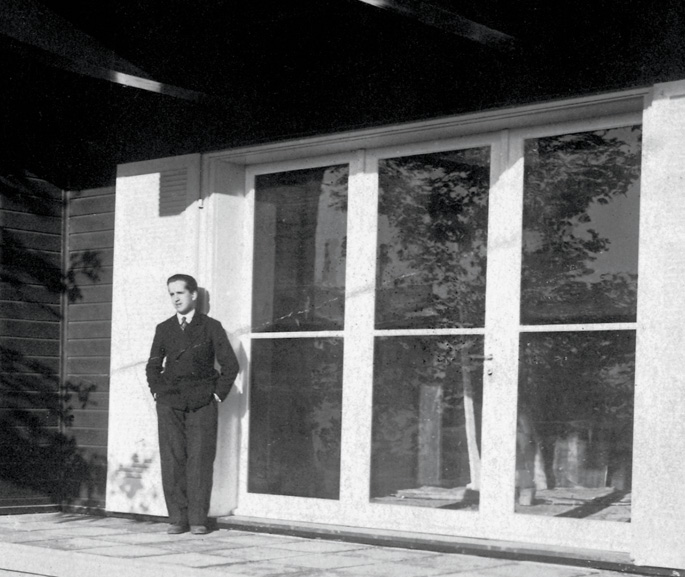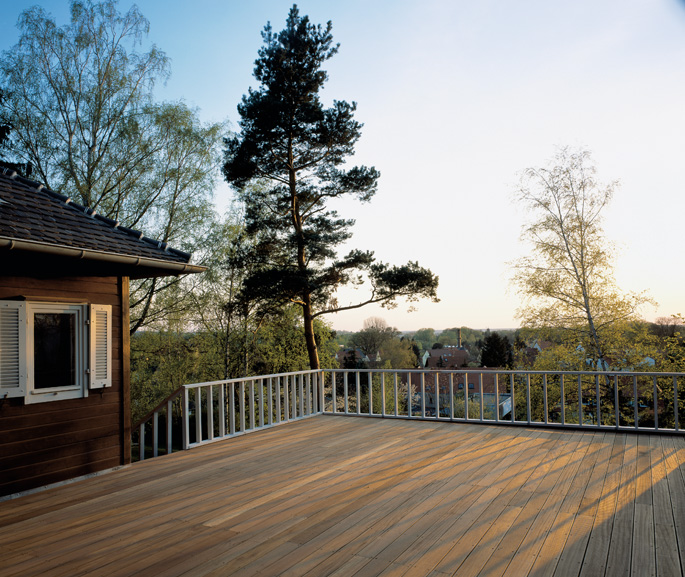The Architect


Wachsmann was an exceptionally poor student who had dropped out of school at the age of fourteen. He started to learn carpentry, but his training more or less ended when the number of war causalities began to soar and his workshop switched from furniture to coffin production. He was intelligent and resourceful enough to later gain admission to the Berlin Arts and Crafts School to study architecture, but was sidetracked by city life. Displeased with his progress, his family sent him to Dresden to study with Heinrich Tessenow at the Academy of the Arts. After a successful year, however, Wachsmann grew tired of Dresden; he wanted to experience the revolutionary, and the revolutionary was only happening in Berlin. In the middle of the semester he broke off his studies and returned to the German capital. Through a personal connection, he secured an apprenticeship with the architect Hans Poelzig. A year later he took flight once again, first to Holland, then to Paris. He returned from France several months later, destitute and desperate. Fortunately for his sake, Poelzig had since been made a director at Christoph & Unmack and could offer him a job. None of his erratic past deterred Wachsmann in the least. The same morning that he decided to build Einstein his house, Wachsmann boarded a train to Berlin. He arranged for a chauffeur from the local branch of Christoph & Unmack to drive him from the station to Einstein´s apartment at Haberlandstrasse 5. He had found the address in the telephone book.
At the door, Elsa Einstein greeted him rather coolly. Her husband wasn´t home, what did he want? Ever since Einstein´s rise to fame all sorts had appeared to solicit money or offer their services and Elsa expected another charlatan. Through a combination of bluff (he was a freelance architect whose private chauffeur was waiting outside) and chutzpah (there was no other architect with more experience in building wooden houses), Wachsmann persuaded her otherwise.
The same day he and Elsa went to inspect the most recent offer from the city. During the trip, Elsa explained what she and her husband were looking for: a brown-stained house, with French windows, terraces, and a dark-red tiled roof. Except for the living room, which should have a fireplace, the rooms of the house were to remain small. Most important, Einstein´s room had to be well-separated from the others. While Einstein required quiet seclusion from the family for his work, the family required quiet seclusion from Einstein´s snoring for their sleep. Elsa arranged for Wachsmann to return the next day and discuss details with Einstein personally. Determined to win over the Einsteins and get the drop on any competition, Wachsmann began work on a preliminary set of blueprints in the train back to Niesky that evening and didn´t finish until early the next morning. When he was done, he had a team of ten engineers and draftsmen at Christoph & Unmack transform his designs into finished plans. By one o´clock, he was back on the train to Berlin.
The second time at Haberlandstrasse 5, Elsa greeted Wachsmann warmly. She introduced him to Einstein, showed him the apartment, and they ate together with Elsa´s daughter Margot and Einstein´s secretary, Helen Dukas. Only after dinner was cleared from the table did Einstein get to the point. What did he think of the property? Wachsmann counseled against it, but he had prepared a preliminary project in any case. The detailed blueprints, calculations, and building specifications he spread onto the dining room table surprised the Einsteins, and they wondered whether Wachsmann had an inside source, for he couldn´t have done so much work in so short a period of time. After Wachsmann told them the real story from stumbling across the article to staying up the night Einstein couldn´t help but laugh out loud. Einstein studied Wachsmann´s plans like an expert. (After three years working with technical drawings at the Bern patent office, he was one.) What he saw pleased him. Wachsmann and the Einsteins discussed the details for several hours. One matter open to debate was the building material. Einstein, as everyone knew, preferred wood; Elsa strongly favored stone. Einstein thought a wooden house would feel cozy and harmonize better with the environment. Elsa thought a stone house would feel more solid and be less susceptible to fire. The dispute was settled pragmatically. Wachsmann pointed out that a stone house was too expensive, and its walls would offer no protection from a fire started on the inside. Wooden homes were also easier to build and customize, and they could be moved into immediately.